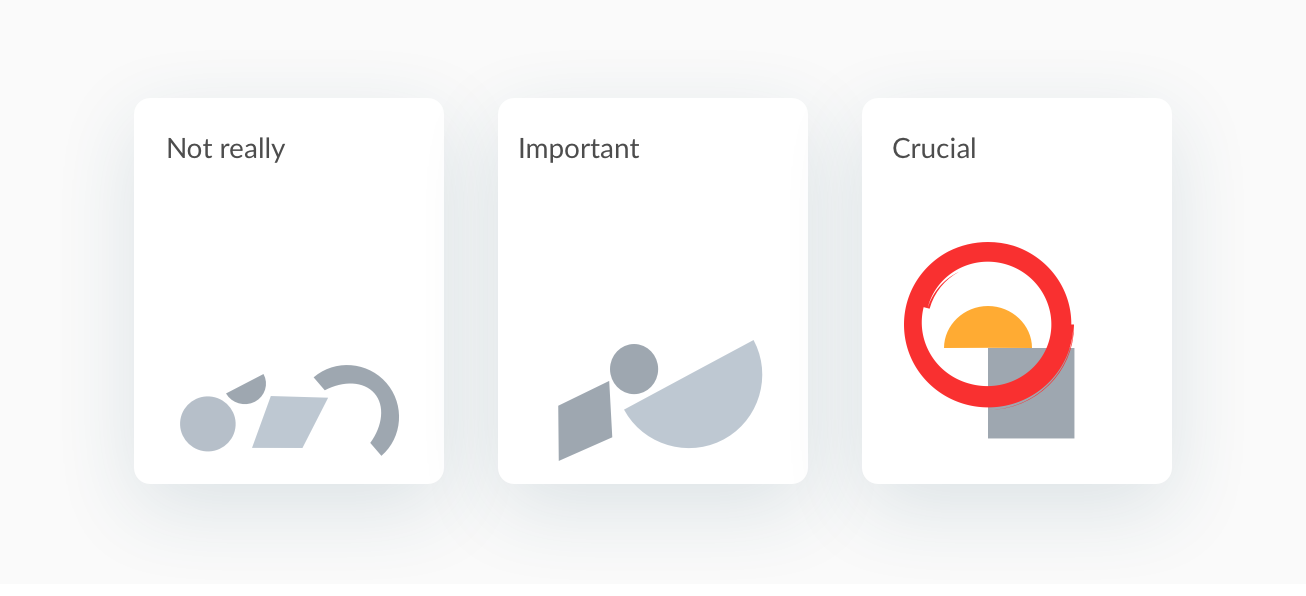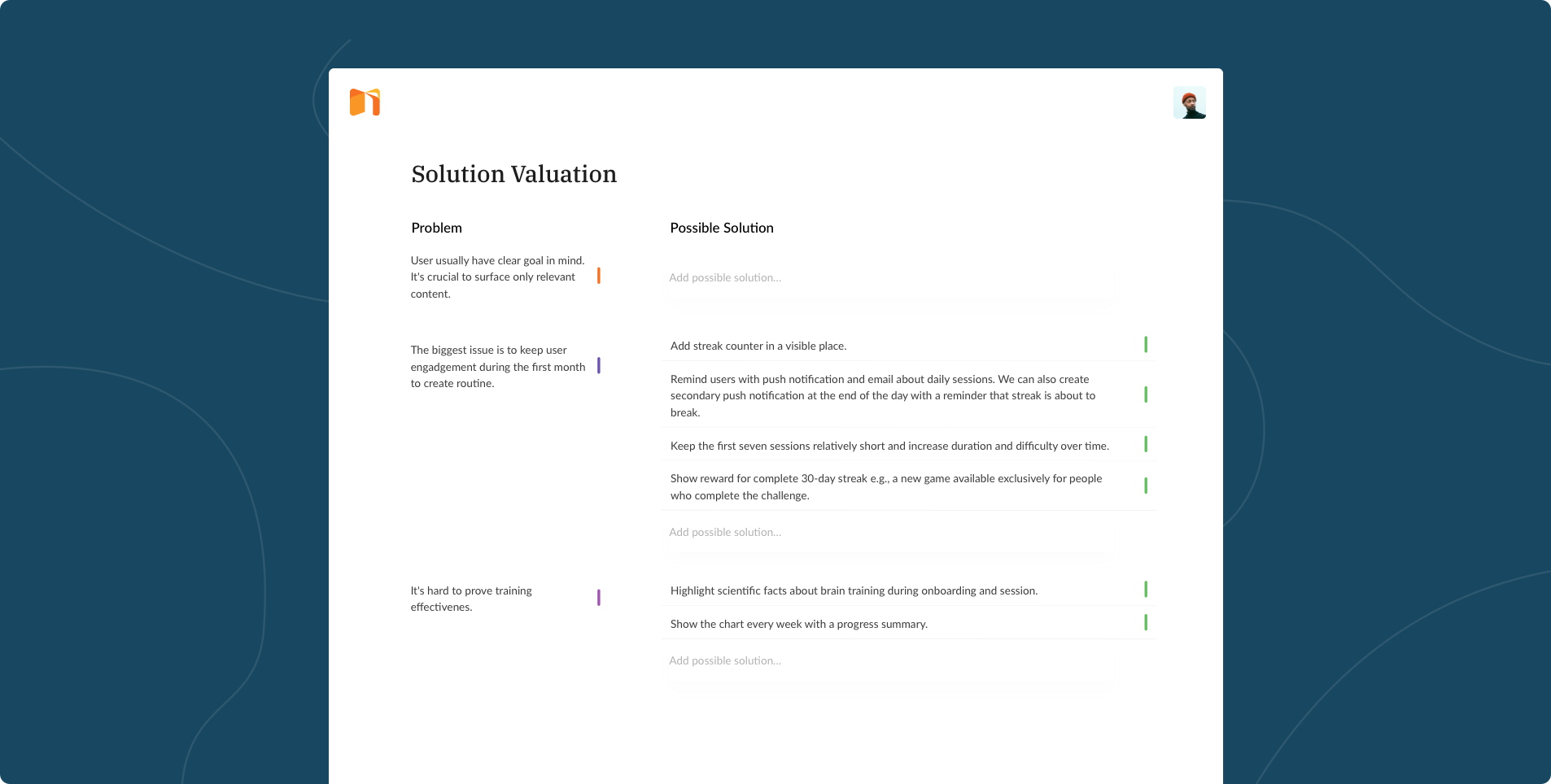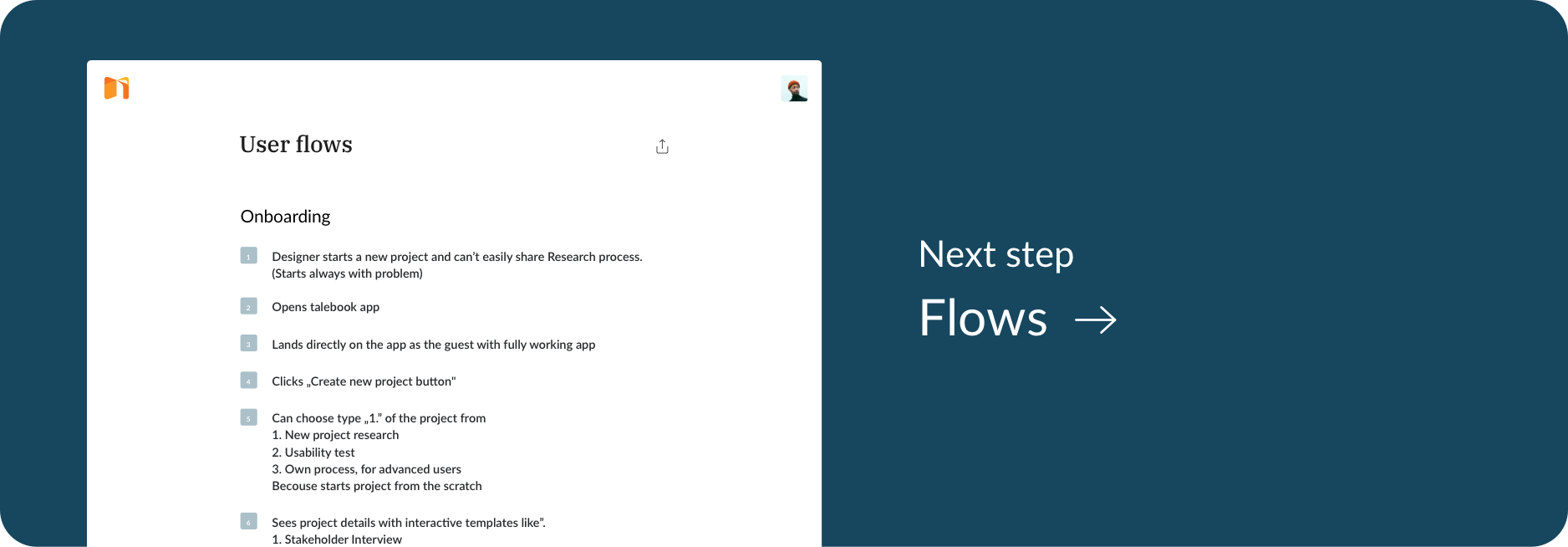Now that you’ve defined the problems and identified the ones that need solving first, it’s time to commence the fun part of the project work — ideating the solutions.
Step by step guide
Go to first problem in the list
In the previous exercises, we preselected the list of problems, which we will attempt to tackle in solution valuation. Select the first problem on the list and let’s get started. If you don’t have a list of crucial problems, go back to the Problem Valuation exercise.
Come up with 5 best solutions
Now is the time to go all out and try to come up with as many solutions to the problem as possible. Let each member of your team use Talebook to write down anything that comes to mind. When you feel your creativity pool getting exhausted, move to next step.
For example:
Problem: Hard to get user feedback on new feature
Ideal Solution: Add Intercom chat integration to website with feedback prompt.
At the end of this step you you should have at least 20 possible solutions for each problem in the backlog (assuming you invited at least 5 people).
Come up with 5 worst ideas for solving the problem
To get your creative juices up and running, write down some of the worst possible solutions. This may look silly at first but it’s a great technique to discover unconventional ideas. Go wild and forget about all constraints at this point. However, remember to stay focused on solving the problem. Every idea, whether good or bad, has to directly relate to the problem.
For example:
Problem: Hard to get user feedback on new feature
Worst Solution: Send letters asking the users to write their feedback and send it back to you via postmail.
At the end of this step, you you should now have around 40 ideas for each problem in solution valuation. 20 best and 20 worst (assuming you invited 5 people).
Share all your ideas with the team and get 5 new solutions based on the 40 ideas.
It’s time to get inspired. Share your ideas with your team members and let them share their ideas with you as well. This process can result in a new combination of ideas that could provide you with excellent solutions.
Vote on solutions
Now that you have different ideas to work with, how do you pick the best one for implementation?
Get all of your tags ready, examine them closely, and discuss them with your team members. Agree on the best parts of each idea and take a vote to decide on which particular parts to use. This lets you create a Meta-Solution out of it.
Discuss the results and select the best idea
After the vote, discuss the winning solution with your team and make sure everyone is on board. Remember, it’s ok to combine multiple ideas into one.Tips
Give your team a heads up about the exercise
It’s a good idea to give each of your invited team member a heads up about the exercise, whether by email or by group chat. This will give them time to prepare and possibly clear their schedules for it.
It’s OK to conduct this exercise asynchronously
If you can’t gather the team to do the exercise at the same time, it’s also possible to do it asynchronously. Just send them an email with step by step instructions to input their ideas to solution valuation method within a set deadline.Timeline:
- Day 1 – Brainstorm best and worst solutions
- Day 2 – Create ideas off other solutions
- Day 3 – Vote
Stay focused on the problem
It’s easy to get carried away with all the ideas and voting processes. But keep in mind that the most important thing is finding the right solutions to the problems on your list. Stay focused and remind your team to do the same.
Conclusion
Creating solutions can be exciting but also overwhelming at first. Make sure you remain open to new ideas. The Talebook process is all about rapid iterations, so it’s ok if the selected idea is a little bit atypical. In the next methods, we will verify which solution resonates with your audience. If not, you can always get back to this exercise and brainstorm new solutions for testing.





